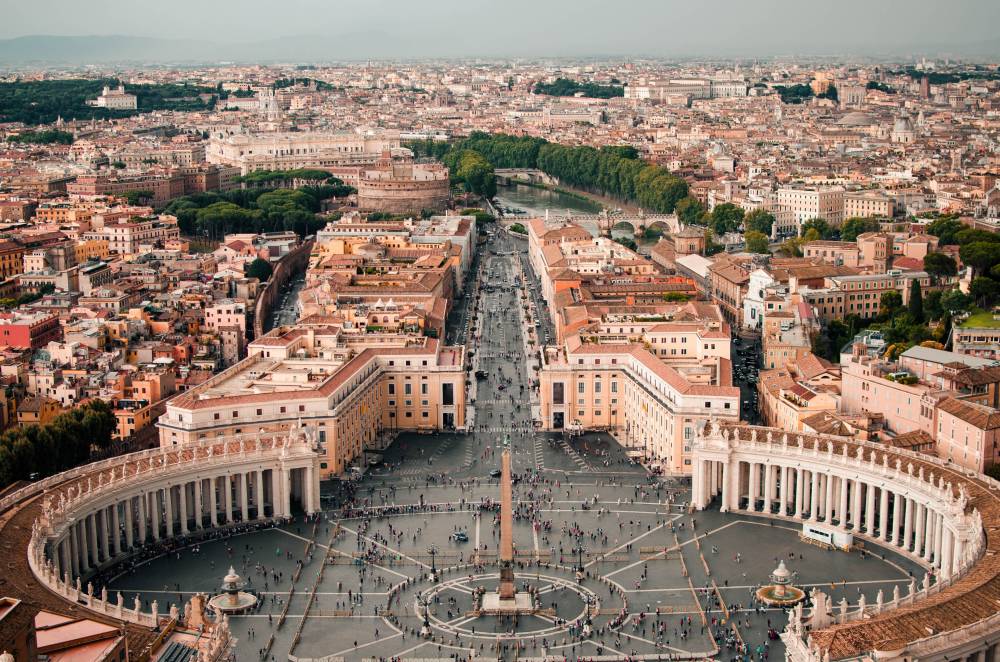Rome, the Eternal City, is a destination that needs no introduction. This timeless metropolis has captivated travelers for centuries with its rich history, iconic landmarks, and irresistible charm. From the grandeur of the Colosseum to the splendor of the Vatican City, Rome offers a sensory feast that few cities can rival. In this blog, we will take you on a journey through the heart of Rome, exploring its history, culture, and the many treasures it has to offer.
A Glimpse into Rome's Rich History
When you walk through the streets of Rome, you are treading on history. The city's origins trace back to 753 BC, making it one of the oldest continually inhabited cities in the world. Its legendary founding by Romulus and Remus, the twin brothers raised by a she-wolf, adds an air of myth and legend to its history.
Throughout the centuries, Rome has been a center of power, culture, and innovation. It was the capital of the Roman Empire, which once ruled over vast territories, shaping the course of Western civilization. Today, Rome's historic center is a UNESCO World Heritage Site, a testament to its enduring cultural significance.
The Architectural Marvels of Rome
Rome's architecture is a blend of the ancient and the modern, where ancient ruins stand side by side with Renaissance palaces. One cannot visit Rome without being awestruck by its architectural marvels:
The Colosseum
The Colosseum, also known as the Flavian Amphitheatre, is perhaps the most iconic symbol of Rome. This colossal arena once hosted gladiator contests, chariot races, and other spectacles, entertaining crowds of up to 80,000 people. Today, it stands as a testament to Roman engineering and ingenuity.
The Roman Forum
Adjacent to the Colosseum lies the Roman Forum, a sprawling archaeological site that was once the heart of ancient Rome. Here, you can wander among the ruins of temples, basilicas, and government buildings, gaining insight into daily life in the ancient city.
The Pantheon
The Pantheon is a masterpiece of Roman architecture, known for its perfectly preserved dome. Originally a temple dedicated to all gods, it now serves as a church and a tribute to the genius of Roman engineering.
The Vatican City
While technically an independent city-state, the Vatican City is an essential part of any visit to Rome. It houses St. Peter's Basilica, one of the world's largest and most beautiful churches, as well as the Vatican Museums, home to some of the most significant art collections in the world, including Michelangelo's Sistine Chapel ceiling.
Exploring Rome's Cultural Treasures
Rome is not merely a city of ancient ruins; it is a thriving cultural hub. The city's artistic heritage is celebrated in its museums, galleries, and theaters:
Galleria Borghese
This art gallery is a treasure trove of masterpieces, including works by Caravaggio, Bernini, and Raphael. It's an intimate setting that allows you to get up close and personal with some of the world's greatest art.
Capitoline Museums
The Capitoline Museums house a vast collection of ancient Roman art and artifacts. The museums themselves are masterpieces of Renaissance architecture, designed by Michelangelo.
Teatro dell'Opera di Roma
For those who appreciate the performing arts, the Teatro dell'Opera di Roma offers a diverse program of opera, ballet, and classical music performances in a stunning historic venue.
Savoring Roman Cuisine
Roman cuisine is a delightful fusion of flavors, influenced by centuries of history and culinary traditions. Here are some must-try dishes:
Cacio e Pepe
A simple yet divine pasta dish, Cacio e Pepe consists of spaghetti, Pecorino Romano cheese, and black pepper. The result is a creamy, cheesy, and peppery masterpiece.
Carbonara
Another pasta classic, Carbonara, features eggs, Pecorino Romano cheese, guanciale (cured pork jowl), and black pepper. It's a creamy and indulgent treat for your taste buds.
Supplì
These rice balls are deep-fried and filled with a molten center of tomato sauce and mozzarella. They make for a perfect snack or appetizer.
Gelato
No visit to Italy is complete without indulging in gelato. Rome boasts some of the best gelaterias, serving up a delightful array of flavors, from classic chocolate and vanilla to inventive creations.
Embracing the Roman Way of Life
The beauty of Rome extends beyond its physical attractions; it's also about embracing the Roman way of life. The city's relaxed pace encourages you to take leisurely strolls through its charming neighborhoods, sip espresso at a café, and engage in the time-honored tradition of passeggiata, an evening stroll through the streets.
Rome's people, known as "Romans," are warm and welcoming. Engaging with locals and immersing yourself in their daily life is a rewarding experience. Whether you're bargaining at a local market, sipping wine at a cozy enoteca, or savoring a long, multi-course meal at a trattoria, you'll find that the Romans take great pride in their food, wine, and traditions.
Planning Your Visit to Rome
Before you embark on your Roman adventure, here are some practical tips to ensure a smooth and enjoyable visit:
Timing
Rome can get scorching hot in the summer, so consider visiting in the spring or fall when the weather is more pleasant. Winters are milder but can be rainy.
Transportation
Rome has an extensive public transportation system, including buses and a metro system. Walking is also a great way to explore the city's historic center. Taxis are readily available but can be expensive.
Tickets and Tours
Many of Rome's attractions, such as the Colosseum and Vatican Museums, have long lines. Consider purchasing tickets in advance or booking guided tours to skip the queues.
Dress Code
When visiting religious sites like St. Peter's Basilica or the Vatican Museums, dress modestly. This means covering your shoulders and knees.
Language
While Italian is the official language, English is widely spoken in tourist areas, so you should have no trouble communicating.


0 Comments